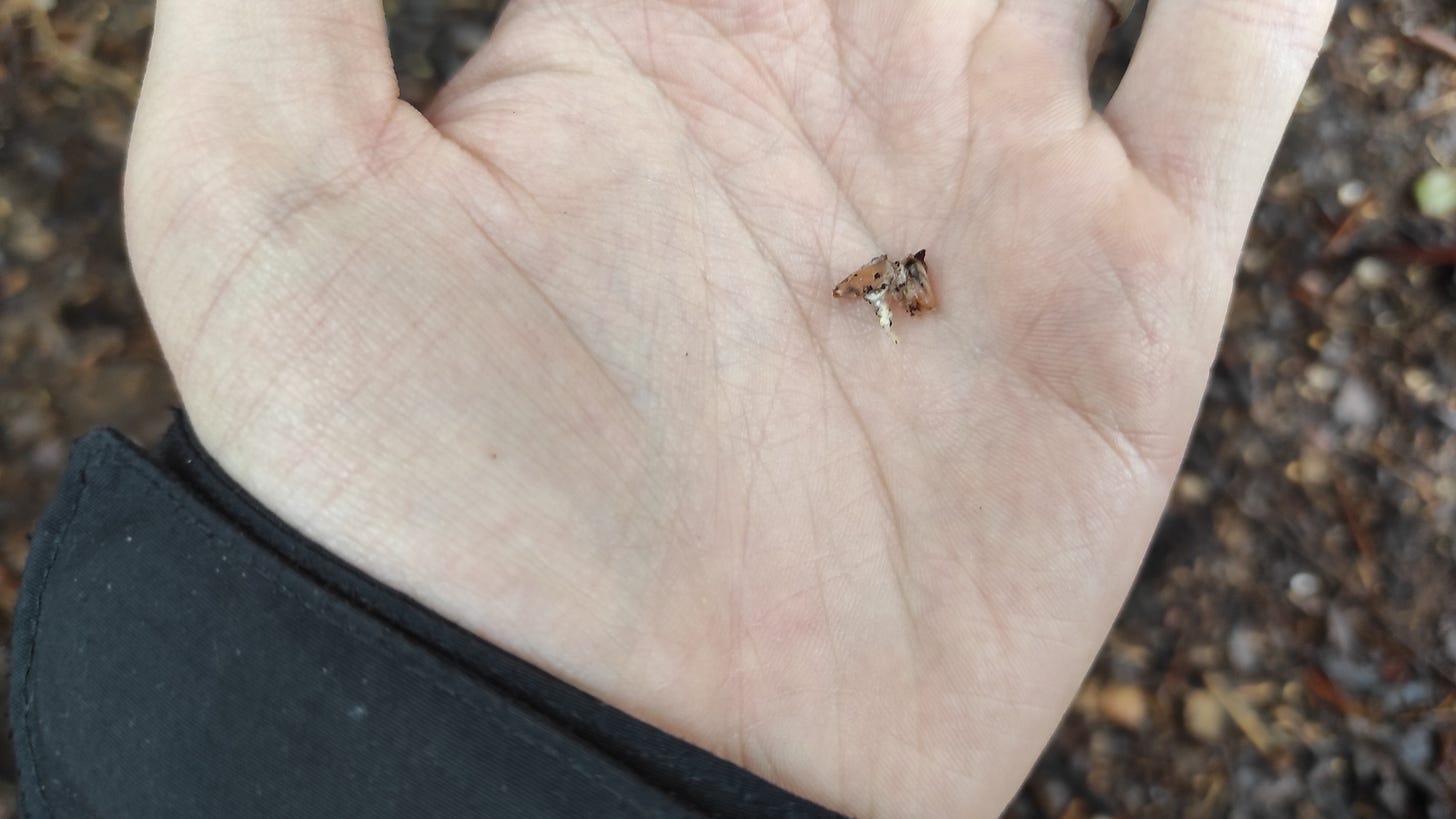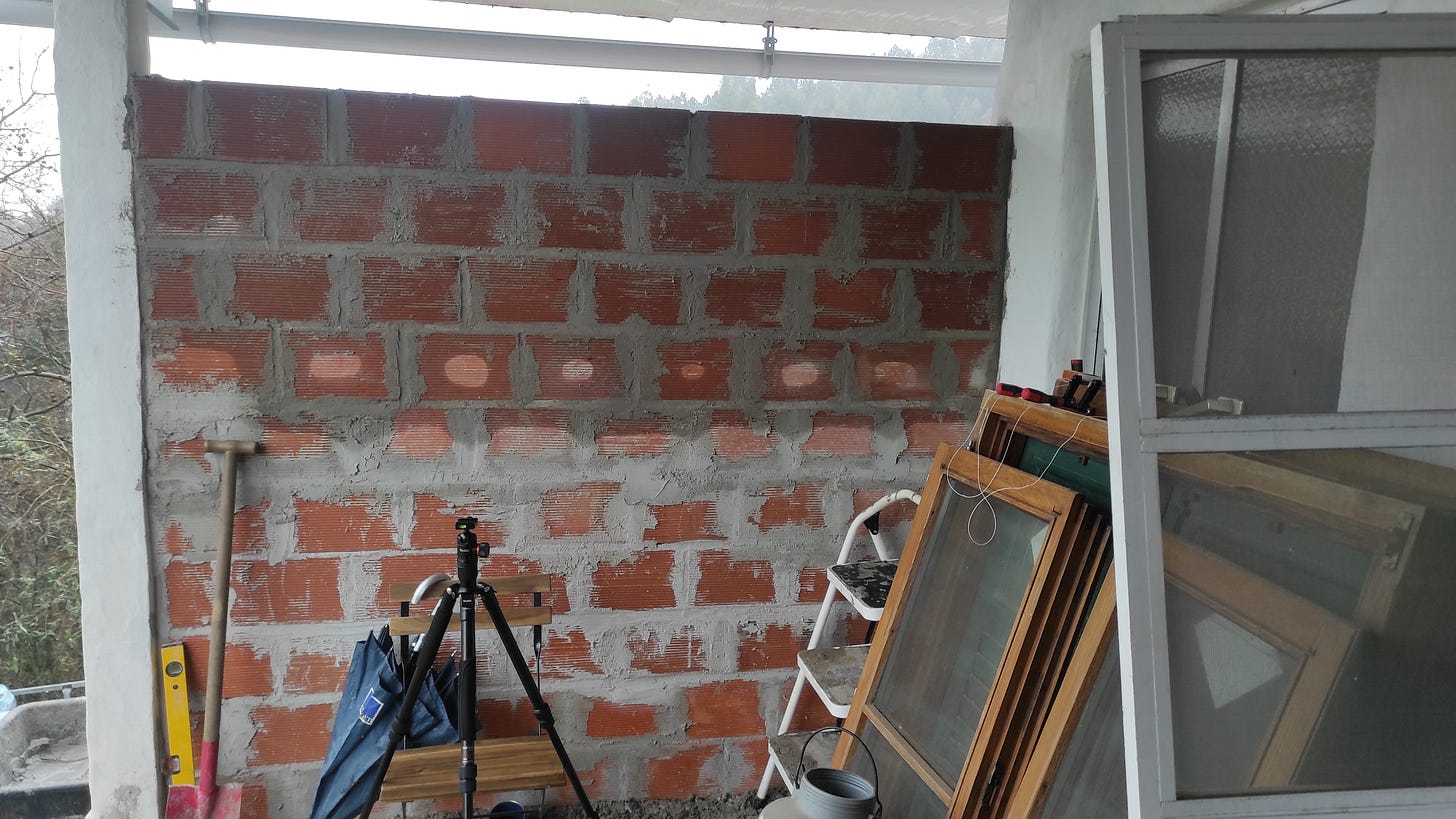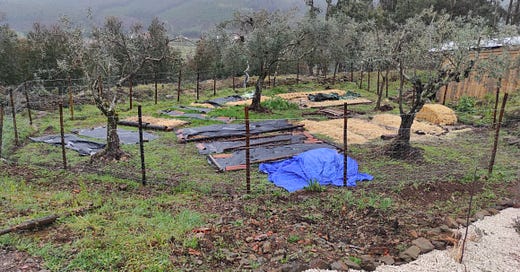We are making a spontaneous trip to Lisbon on the day that this is published. We’ve been trying to get an appointment at the German embassy for our son to replace his out-of-date passport, and we finally got a chance, but the only day available for the whole month is this Thursday. So we need to rush out to get an up to date photo of him and then hop on the bus to Lisbon. When we’re there, we will also take the opportunity to have a bit of a break from the farm. Things are going to get very busy for us here so it will be nice to have a short break of a few days before the year really gets going.
More changes are coming into our lives. Jackie is in the process of being interviewed for a new job. This job is full time shift work, so no more having control of our own day… That will leave me with added responsibilities on the farm so we are figuring out ways that we can do to organise things better. First, we found a playgroup for the toddler, that will give him more time to socialise with other children and allow a little extra time for me to focus on the farm. It’s only one or two afternoons during the week but every little helps. Also, after my immigration appointment this month we need to sort out a driver’s licence for me. It’s long overdue and without one, things will be tricky when Jackie is working.
The other thing that we’ve decided to do is welcome volunteers onto the farm this summer. Me and Jackie used to volunteer on similar projects back in the day and it really inspired us to do what we are doing now. We opened up a WWOOF (Working on Organic Farms) account and we are already getting interest from potential volunteers, at this rate we will be booked for the whole summer. We’re being contacted by a mix of young people and young families. I think this is great because that is a perfect time for people to discover different ways of living, just like when I was in my early twenties and did the same thing with Jackie.
During the next month the weather should turn in the direction of Summer and then we can host people in the stone house, where we lived for the first seven months here. Now we can provide guests with electricity, which is a nice bonus. The main thing that people will help us with is landscaping. It’s something that I can do with the volunteers (so long as the toddler allows it…). This year we plan on building a high security chicken coop and run, a nice outdoor space with shelter for people to relax during summer and work on projects, and at least three cubic meters of firewood storage with a roof. Before we can do any of that we need to level out the relevant surface areas in preparation for construction. We are going to set aside a budget to provide extra food and snacks to our helpers, something that we always appreciated when we were on that side of the bargain.
Work on the garden fence is moving forward. We initially rammed the fence posts into the ground last September, but waited til after the olive harvest before continuing with the project. As it usually goes, it got delayed until now, the beginning of March. All of the seedlings have been planted in the greenhouse and the first transplanting should commence later this month.
That works out quite well with the timing. The main body of the fence is essentially complete now, the only remaining job is to build a gate. We bought some old pallets from a local store, they are selling them for just three euros fifty per piece. My plan is to tear one or two apart and use that wood to build a gate. We just need to go and buy some hinges.
Building the fence for our first garden was top of the list when we moved here a year ago and it was one of the first signs of progress on the farm. Back then I cut down a selection of small Eucalyptus trees with a hatchet, sawed them into one and a half meter segments, and carried them the long way around the valley by road to the house and garden. This time we bought treated fence posts and saved a huge amount of time doing it.
The fence is made of three components; the posts, a heavy duty "Javali fence" designed to hold strong against wild boar, and a thinner wire chicken fence to keep rabbits and chickens out. Some neighbors of ours have an incredible garden, with plants from around the world growing there, but one year the whole thing was devastated by wild boar. Now they have a 12 joule electric fence surrounding everything. We don't want to take a gamble with the wild pigs if we put in the work of a garden so we're happy to go the extra mile and build a fence before planting.
Weather has been quite dry in recent weeks, thankfully we’re now getting a nice dose of rain that I think of as the early spring rain. We had some heads up notice of this change in weather so I packed the toddler on my back and went out to the pollards to sow the main casting of wheat. I got about four and a half kilos of seed in the ground and the next day the sky opened up and started to rain. So hopefully the seed can germinate, when the grass grows it should help retain moisture in the soil and the crop can mature without extra water.

I saw a neighbour who grows heirloom seeds and she asked if I would be willing to grow rice. I’d love to get some dry rice seed stock so I agreed to plant one or two square meters this April in order to cultivate the seed and keep the germination rates high. In April of twenty twenty four I’d like to make some paddies in the small field and try out the Masanobu Fukuoka method of growing. Expect to hear a lot more about rice in the next year…
Some time has now passed since Pigl's death and we are able to begin thinking very carefully about it. The experience of raising two pigs - and watching them both die - has been tragic, but on the flip side I feel like we have gained some valuable insight. To summarize, we believe now that it was likely the bracken fern that killed both pigs. It's ironic that we bought the pigs to kill the bracken.
The reality is that many people in similar situations to us use pigs for this purpose, without suffering a mortality rate. Before buying the pigs we had researched the viability of grazing them in bracken infested woods, but we were not aware of the fledging study of Bracken toxicity in pigs. We were advised to graze pigs in the forest for several years and then move sheep onto the land to establish a grassy forest as opposed to a weedy bracken forest.
Bracken is known to be poisonous, but clinically reported cases of pigs being poisoned by bracken are quite rare. However we have found some examples of this condition now, which is what leads us to believe bracken is the reason for their death. Jackie has written about the clinical symptoms of the pig deaths and I will write more in the future about how we could reintegrate pigs onto the farm.
In the mean time suffice it to say that pigs are a particularly resilient animal, which works to their benefit, but in the case of bracken toxicity it is not as obvious as you might think, considering how other animals react to it.
Work on the house continues. A builder friend of ours stopped by the other day and gave me some valuable advice on how to finish the newer part of the house. As I mentioned in a previous edition, the former owner of our land built an extension to the tiny stone hut that was already there. Unfortunately he did a terrible job of it. He left behind a nice spirit level, but it doesn't seem like he ever used it...
So now we are building block walls between his walls that are slanting in various directions... This means that our straight wall meets his leaning wall at a strange angle. So my friend gave me some useful tips to make it work. The exciting job of installing one of the second hand windows that we bought is coming up, and my friend told me how to build a wooden frame into the wonky wall that will provide a perfectly square segment for the window.

The existing window in the kitchen needs to be removed and that is a more complicated job. The last guy to own the house did a good job of casting a reinforced concrete lintel to hold the wall, but he didn't reinforce the building blocks on either side of the window, so under the immense weight of the lintel, there are some cracks in the wall. Thankfully this is not a problem because the window and lintel both need to come out to make way for the new window so we will remove the cracked section of wall and replace that too.
To streamline the process, Jackie has handed the responsibility of this work to me. For the window replacement job I'll need some help and more experienced pairs of hands, so a few neighbors will come over with some acroprops to hold up the ceiling whilst we knock out the window and wall. These are the same guys who helped me build the foundations for the tiny house back in March so I know we'll get the job done in a day.
I've got to finish the walls and windows in the future bedroom first, so I don't expect the big job to begin til the summer.
The Eucalyptus video that I’ve been mentioning for weeks is now complete. It airs on Saturday 11th March at 11:00 CET. In it, Jackie explains the challenges that Eucalyptus plantations present and we detail the outlines of our plan to address the problems on our land.
Thank you for reading. Have a great week and see you next Thursday.





Love to read your newsletter. It makes me think about what you describe and search for subjects I didn't knew nothing about.
About bracken, there is also a study from Porto University where they talk about the toxicity for humans and animals: https://hdl.handle.net/10216/103340. I had no idea about it. Enjoy Lisbon!
I love reading about your plans, so many exciting and interesting plans! You need a lot of energy and enthusiasm for the kind of life you are embarking on, and I can see both are in plentiful supply between you and Jackie. Having to constantly juggle things and adjust is also very important, and not easy. Enjoy your break in Lisbon and good luck with everything. On the pig front, I fully agree with you about the bracken. As I'm not an expert I didn't want to bother you with my findings from the Internet, but because I'm French I had access to research material that was perhaps different from the sources available in English and I found plenty of references both in France and Switzerland to the toxicity of bracken to animals, including cows and pigs, some dating back to 1987. Horses are apparently extremely susceptible to bracken poisoning. I can send you links if you want. One of the papers referred to a bracken toxicity sheet describing symptoms (from the Swiss Direction des Services Vétérinaires). I might be able to find this list if that would help you.